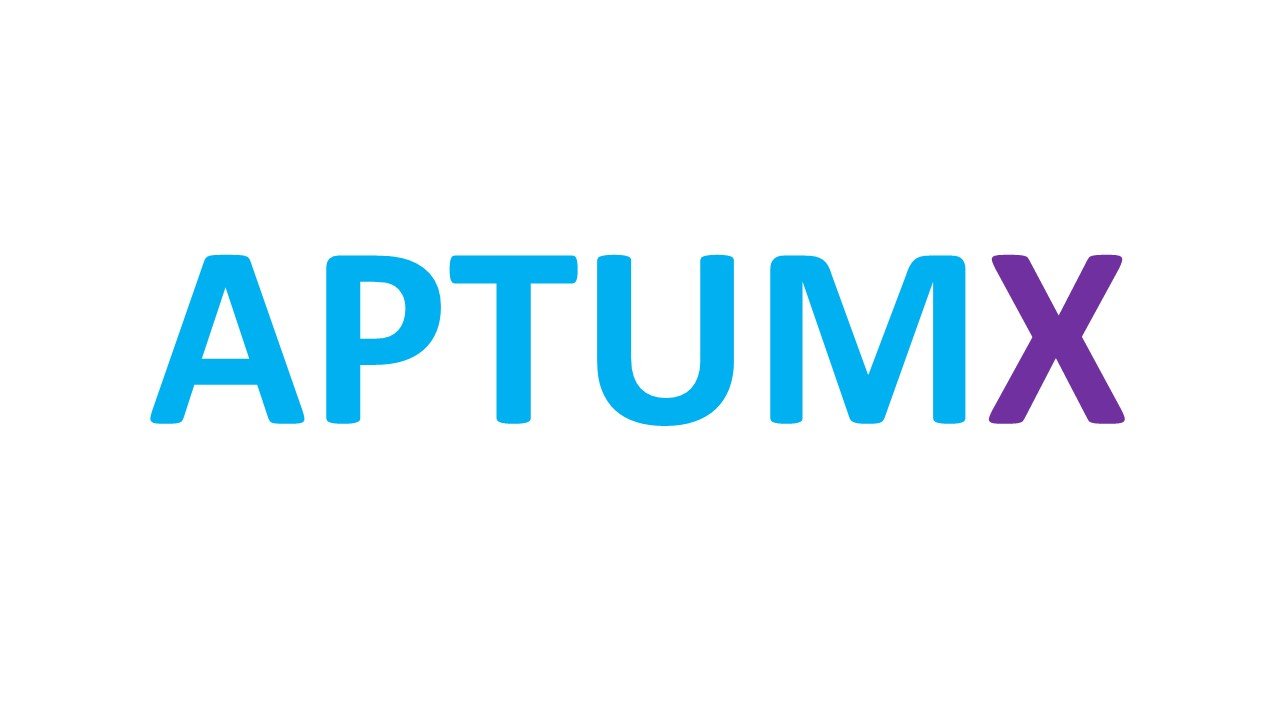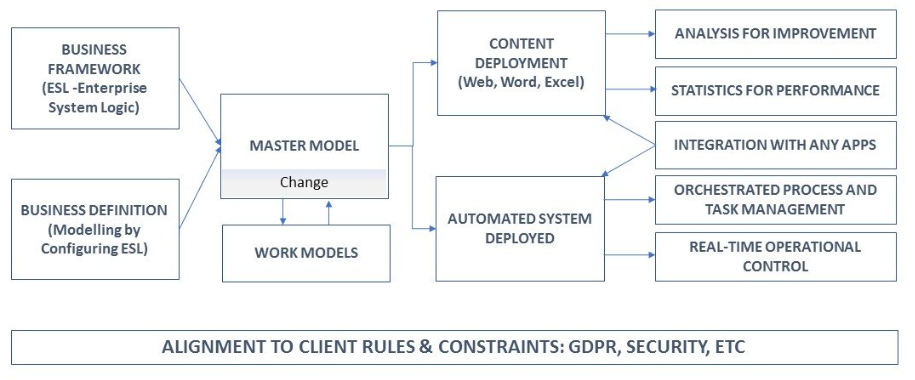
Digital Twin - Next Generation Software
AptumX is a Digital Twin Model of a Business
It enables Business People to design and automate their own business operations
The Business Digital Twin is a single model of the organization. Think of it like DNA: the Digital Twin provides the double helix, you then enter the content that defines the organization’s DNA. It is designed and built holistically, in complete contrast to the way in which corporate systems have traditionally been designed, weaving together component parts in an attempt to create a coherent whole.
This is key to why the Business Digital Twin is a fundamentally different construct from any enterprise software product that has been on the market over the past sixty years.
Two major features of Digital Twin software absolutely transform business:
It is real time, which means that when someone participates in a business process their activity is instantly visible. It also means that if something that is meant to happen doesn’t, appropriate intervention can be triggered. Its activity is bi-directional.
It makes organizations truly agile and flexible by replacing the software development process. Instead of design, code, test, debug, the model goes direct from design to run-time. Change to automated systems is near-real time, a matter of minutes, and with no risk of software failure.
The impact of Digital Twin on business is profound – tenfold increase in productivity has been known.
XSOL, the technology platform on which AptumX is built, is founded on a very important principle that we have learnt from many years in the world of business and enterprise software: there is a set of rules by which any organization can be defined and modelled, no matter how big or small, no matter what it does. XSOL is an algorithmic model that describes business from top to bottom - from the vision to the detail. XSOL’s proprietary Enterprise Systems Logic (ESL) defines the rules, and the logic of the systems that underpin business – in terms of its structure (organizational and spatial), its activities (transactions and actions) and resources (tangible and intangible assets). ESL joins up all of these components.
The founding catch phrase for our product was, Same today, different tomorrow, meaning that the product could be implemented with zero disruption to current activity, but once in place it would ensure that change and operational improvement became an integral part of day-to-day activity. This is the litmus test for Digital Twin software.
Code-based System Development
Time required to change system: 36 hours to 3 months for a small to medium size project
Digital Twin System Development
Time required to change system: 20 minutes to 20 days for a small to medium size projectA Digital Twin Model makes innovation economic
“No change is too small”
The Technology behind a Business Digital Twin
The concept of the Digital Twin brings three major innovations that transform the way computer technology is applied to the world around us and in particular to the activities of business:
It reverses the way in which business systems are conceived,
it changes the relationship between IT systems and the people that engage with them, and…
it transfers the responsibility for business computer systems from IT to the business people who use them.
The Top-Down Model
Business computing started out as data processing. Individual business functions were concerned with getting data into the computer and processing it. These functional areas were labelled ‘islands of automation’ by a new generation of application vendors who packaged the islands around a shared database. These vendors, SAP, Oracle, etc, are still with us today. Having multiple vendors created a demand for sharing data, which gave rise to Enterprise Application Integration, a slew of Middle-ware products, and a challenge that 20 years later is still alive. Today, Enterprise Architecture seeks to provide a framework within which applications can work as a unified whole. The complexity this approach has spawned is huge. Digital Twin fixes this at a stroke.
A business is similar to a human being. It has a structure ( a skeleton), systems running through the structure to operate the business (nervous, circulatory, etc.), and components that the systems connect and activate (muscles, organs, etc.). If I ask you to create a human you first think of what the final object will look like, and then drill into successive layers of detail. You don’t start by creating a toe and an ankle and figuring out how to integrate them.
A Digital Twin starts with the end in mind. What does the real-world twin look like? If I’m building a jet engine I start with the overall engine. I don’t start by building the turbine blades and then figuring out how to fit them into the engine. This also highlights a problem for a business digital twin - business is a concept, not a solid object. What does business look like?
The Digital Real-world Connection
A Digital Twin environment has three elements. First, a model of a business, how it is organized, the activities it engages in, and the resources (people, buildings, machines, materials, money, etc.) used in those activities.
When the model has been populated with a business’ details it uses this data to program the second element, the Process Manager, which orchestrates and controls what happens in the business.
The Process Manager connects with the third element, the Real-world twin - the business. It y provides people with the functions they need to undertake, manual or computer-based, and alerts them to the need for action. It also provides users with whatever digital materials are required to complete their work - including providing access to systems, documents, and data from external sources with which the twin has integrated .
The twin also employs automated (robotic) activity that doesn’t involve human involvement and provides management with a real-time view of what is happening in the business..
Putting Business in Control
The key point about a Digital Twin model is that it’s a business model, that uses a business language (Enterprise System Logic) to define a business and its operations.
For automation of business activity to be successful the processes described in the Digital Twin model must exactly replicate their Real-world counterparts. Only the people involved in those processes are able to achieve this. Therefore business has to take responsibility for the systems it uses.
The content of a Digital Twin model can be employed in two ways - deployed in a variety of forms for use in improving processes or for supporting an operational change, and in the form of an automated business system.
How a Digital Twin works
An organization will have a single Digital Twin model that defines how the business works – the Master Model. This is a carefully managed resource. It is the “DNA” of the organization. When a change in business practice is instigated, whether a minor improvement or a full transformation, the associated process(es) in the Master Model are provided to an analyst(s) on a Work Model for them to modify. Once completed their changes are notified to the person responsible for the Master Model, whereupon they are vetted, and any conflicts resolved, for example, if two analysts each create a new task with the same name.
The Master Model is held in a repository, such as SharePoint. The content is deployed in the form of html, Word or Excel documents to users throughout an organisation. Automated systems are also deployed from the Master Model, whose XML content is converted to the stored procedures and runtime scripts that animate the system.
User activity is controlled by a Process Manager, hosted locally or remotely. Access to the system is through roles given to each user. Their role(s) determine what they see - i.e. the processes they can initiate and the processes they participate in. When users initiate a process, they will be presented with a data entry screen, either one created from the automation model or one presented from a third-party application, such as an ERP or CRM function.
The content of the screen through which users interact is provided from the Process Manager. The result of an interaction is an Event that is sent to the Process Manager where the content is used to determine the next stage in the process, to initiate an intervention based on predetermined criteria, and to update the corporate database and real-time performance dashboard displays.






